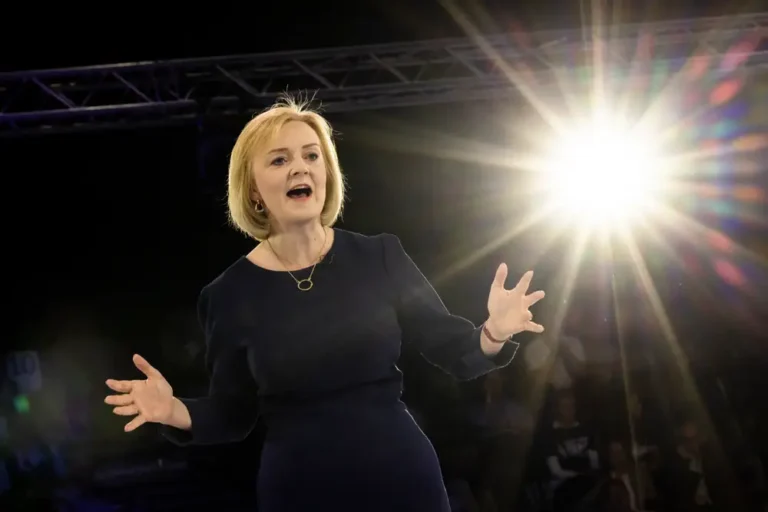Taylor Swift or bust: As costs weigh on concertgoers, mid-sized shows just aren’t worth it

Jaylon Jackson decided it’s time to slow down his spending on concerts.
The 21-year-old dog groomer estimated he spent roughly $5,500 on at least 12 shows over the past two years.
But when Hozier announced LA tour dates, with tickets selling for around $130, he decided to skip them.
“I’m very bummed out. I love his music dearly, but I really do want to value the amount of money I spend to see an artist,” Jackson said. For him, that means saving his money for a top-tier production; seeing a Beyoncé tour would be his dream.
He’s not the only concertgoer making that calculation. While Sabrina Carpenter concerts with their Broadway-level sets are still selling out and Taylor Swift’s global Eras tour is wrapping up 18 months of sold-out shows, tickets for popular artists with mid-tier production value concerts are going unclaimed. Think of the canceled Black Keys and Animal Collective tours.
As the post-pandemic “revenge” spending frenzy cools, people are getting more selective with their disposable cash. Pressured by social media and overwhelmed with choice, they’re choosing to save up for the most epic concert experiences possible. At the same time, midlevel artists are having to pay more and more for tour expenses, and can’t lower prices enough to entice more fans.
“I spend a lot of time thinking about who I want to go see and how I want to make the most of what I pay for,” Jackson said. And when it comes to what’s worth splashing out on, “I want to see a good production, I want to see choreography, I want to see lights.”
Taylor Swift or bust
Taylor Swift’s Eras Tour tickets had an average face-value price of $254 in 2023 and a resale market price of $3,801.
Meanwhile, resale tickets on SeatGeek for a late November Kacey Musgraves concert in Texas are going for just $33, almost half the face-value price. Some tickets for a December Justin Timberlake concert in Arkansas are currently going for around $10 on SeatGeek. Later dates for both artists are going for more.
There’s an entire Twitter account devoted to tracking falling show prices, showing how it pays to wait. Data provided to B-17 from ticket resale company Automatiq shows that artists like Post Malone and Morgan Wallen have seen thousands of resale tickets sell below cost for specific dates.
Chris Leyden, the director of growth marketing at SeatGeek, calls this a bifurcation in the market. Right now, some artists are seeing their highest demand ever for tours. On the flip side, there are more deals out there for fans who might want them.
Data shared with B-17 from SeatGeek shows that while the average price of a concert ticket has risen since 2019, there’s been an uptick in tickets under $100 in the past year.
“It’s sort of like the extremes have spread out as well, where we’re seeing concert tickets sell for the most we’ve ever seen them,” Leyden said. “But on the flip side, we’re certainly seeing plenty of concert tickets that are still selling for a relatively good deal.”
It wasn’t clear it would be like this post-lockdowns, when Americans were spending billions to see live shows, and artists were eager to get back on the road and make some money.
Jonathan Bricker, an assistant music business and management professor at Berklee College of Music, said that post-pandemic, artists were booking tours further and further in advance, with a huge surge in touring. But they also encountered a double-edged sword of inflation: It costs much more for artists to buy gas or rent equipment — leading to higher ticket prices — as fans feel more pressure on their wallets from higher housing and food costs.
Mike Finn, the tour manager for Imagine Dragons and a professor at Berklee, said that many tour vendors, such as trucking or lighting companies, have drastically increased prices.
“They’re pricing it for a one percenter of the touring industry,” he said. That’s making it “near impossible” for mid-sized acts and creating a chicken and egg situation, he said. Artists have to raise their prices to pay their vendors, but cash-strapped consumers want those higher prices to be worth their while. It’s leading to some of those lower resale prices: Fans are making it clear that the higher price points aren’t working for them.
After all, with ticket prices getting driven up, “the experience expectations are being driven up,” Finn said. “They’re going to want a night to remember.”
Some of that might be a social media effect, where the biggest and flashiest shows get a ton of hype. Music lover Jackson pointed to examples like Charli XCX and Troye Sivan’s Sweat tour, which seemed to go viral every week, or Sabrina Carpenter’s Short n’ Sweet tour. With social media, he said, there’s a real influence to go see bigger artists — and post about it.
“In the past year or so, we’ve seen more people willing to spend a premium price on seeing their favorite artist live,” Joseph Bocanegra, a StubHub spokesperson, said. “Fans view these types of events as a bucket-list item, like their team playing in the Super Bowl, rather than something to do on a Saturday night.”
Music fans are acting more like sports fans
Automatiq’s data showed that the average ticket price for the $50 to $200 range — the price point where many middle-size artists are likely residing — fell by nearly 23% from the first month that they were on sale to the last month that they were on sale. In the final month of being listed on resale sites, nearly 37% of tickets in that price range sold below cost.

“Nearly 40% of concert tickets in the U.S. for 2024 currently have an average price sold for under $50 on StubHub, including Ice Spice, Omar Apollo, and girl in red, and nearly 80% have an average price sold for under $100,” Bocanegra, the StubHub spokesperson, said.
That might be good news for fans, who are waiting out ticket prices that might not be the right fit for their wallets. But for artists, the new volatility might be leading to their own reckonings.
Finn said he’s working with one musician whose tour of amphitheaters and clubs sold out earlier this year in pre-sale. So for the next dates, they booked bigger rooms and charged higher prices — but tickets didn’t sell as well.
“We were seeing 50, 60, 55% sold in the same areas that we blew out,” Finn said. “And I think that’s just because, again, of the oversaturation that’s happening across the board in the touring industry.”
He doesn’t want to proclaim a grim future for mid-sized acts. Instead, he thinks there’s some leveling out that needs to happen.
“Some of these lighting companies, can they offer discounts for certain size tours — or busing companies or trucking companies? How can they help the economy and the ecosystem of touring by lowering some of the prices?” Finn said.
In the meantime, these dynamics have led music fans to act like a different kind of live events lover: Sports fans. Leyden said that 40% of fans buying concert tickets on SeatGeek are buying them the week of the event — and 18% of that is happening the day of the event.
“Sports buyers historically have been much more last minute,” he said. That makes sense: Baseball fans have so many games to choose from that they can afford an impromptu decision. With a multitude of concerts available — and prices tumbling — music lovers are starting to pick up on that same behavior.
“Right now maybe the sweet spot is to buy the day of the event,” Leyden said, “but maybe three days out is actually the sweet spot in the future because there’s so much demand of last-minute buying.”






